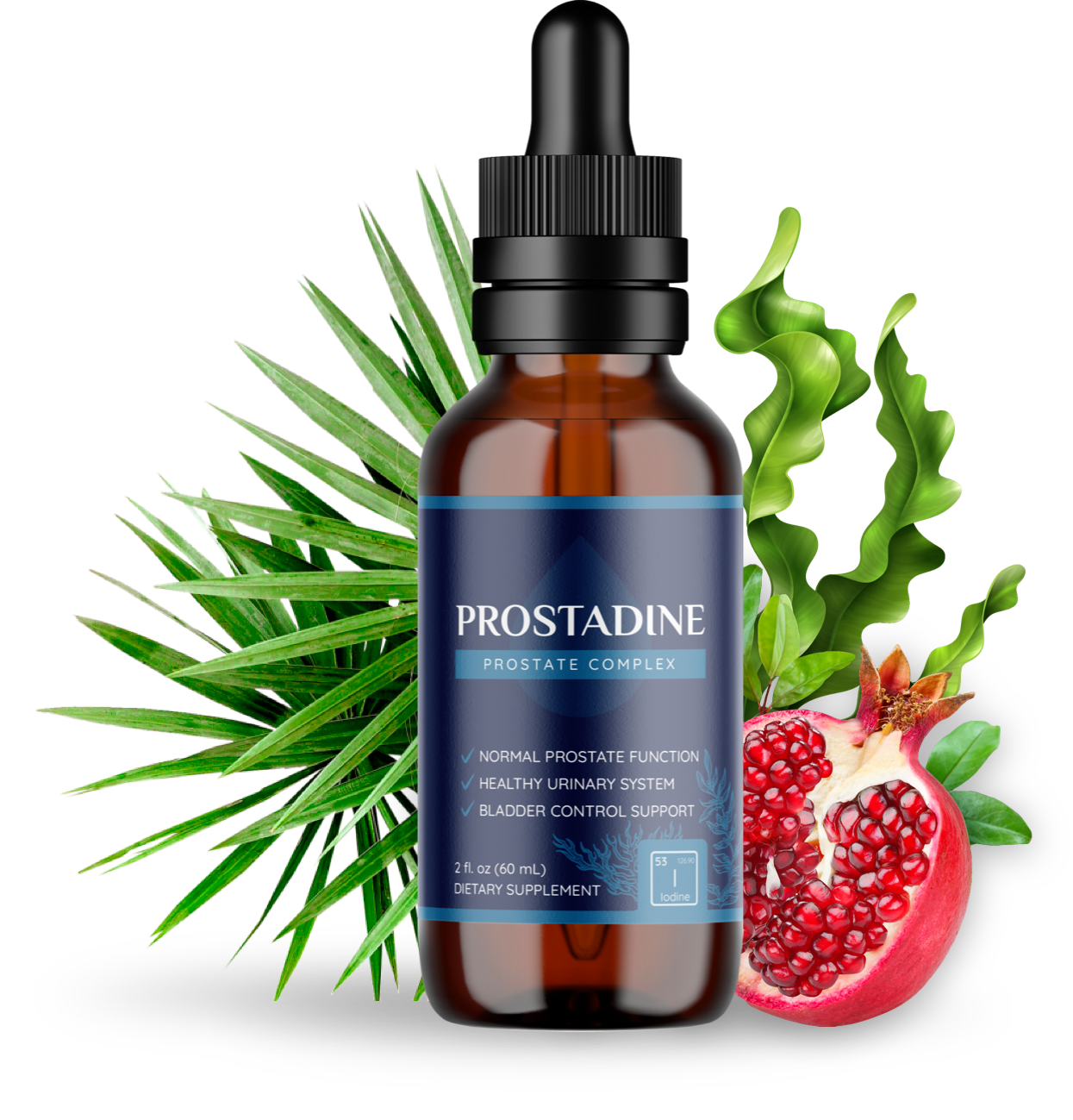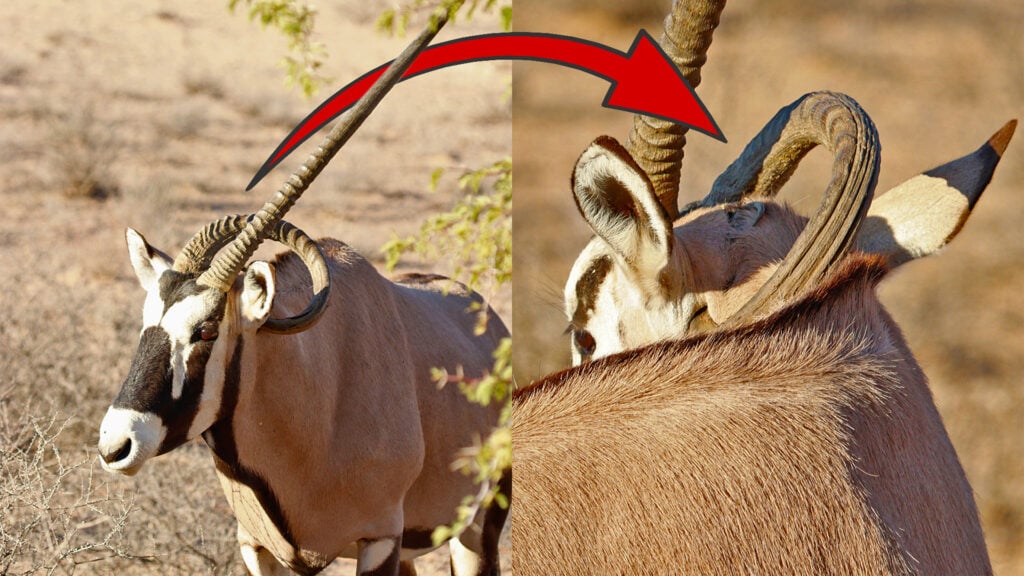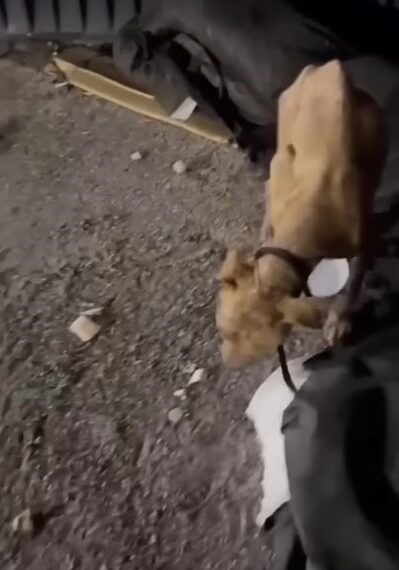
Pieter Venter submitted this series of photographs to Latest Sightings. He took them while visiting the Kgalagadi Transfrontier Park in South Africa.
Unicorn sighting
Pieter told Latest Sightings that he was on his way to Tweerivieren in the park when he decided to stop in at the Houmoed Waterhole. As he pulled up, he took in the golden light of the late afternoon, revelling in the tranquil setting.
There were a few animals standing in the vicinity, of which a lone gemsbok (South African oryx) caught his attention.
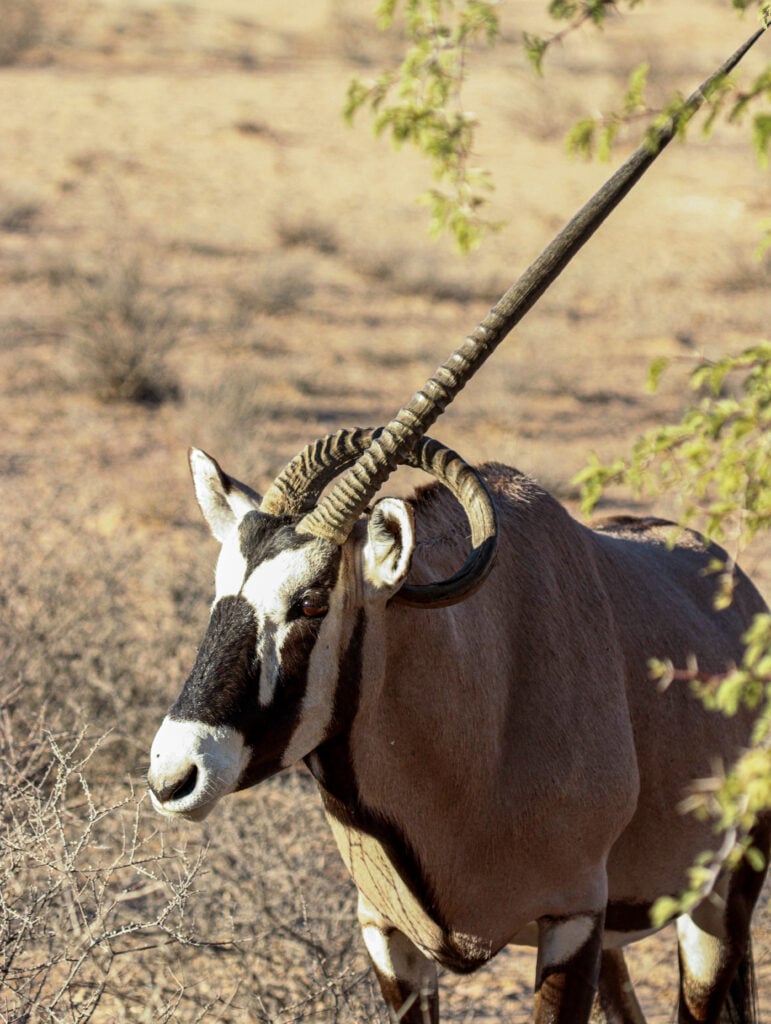
At the best of times, gemsbok are very striking antelopes. Their distinctive black and white facial markings make them easily identifiable. Their other characteristic trait is a pair of long, needle-like horns that are typically quite straight.
Obvious deformity
However, as he looked closer, Pieter realised that there was something amiss with this individual.
One of its horns curled severely over its head instead of growing straight, giving the animal a noticeably deformed appearance.

Making matters worse, it seemed that the horn in question had grown in such a way that it actually penetrated the unfortunate antelope’s head.
A closer look
On closer inspection, we see that the horn enters the skin just behind the left ear.
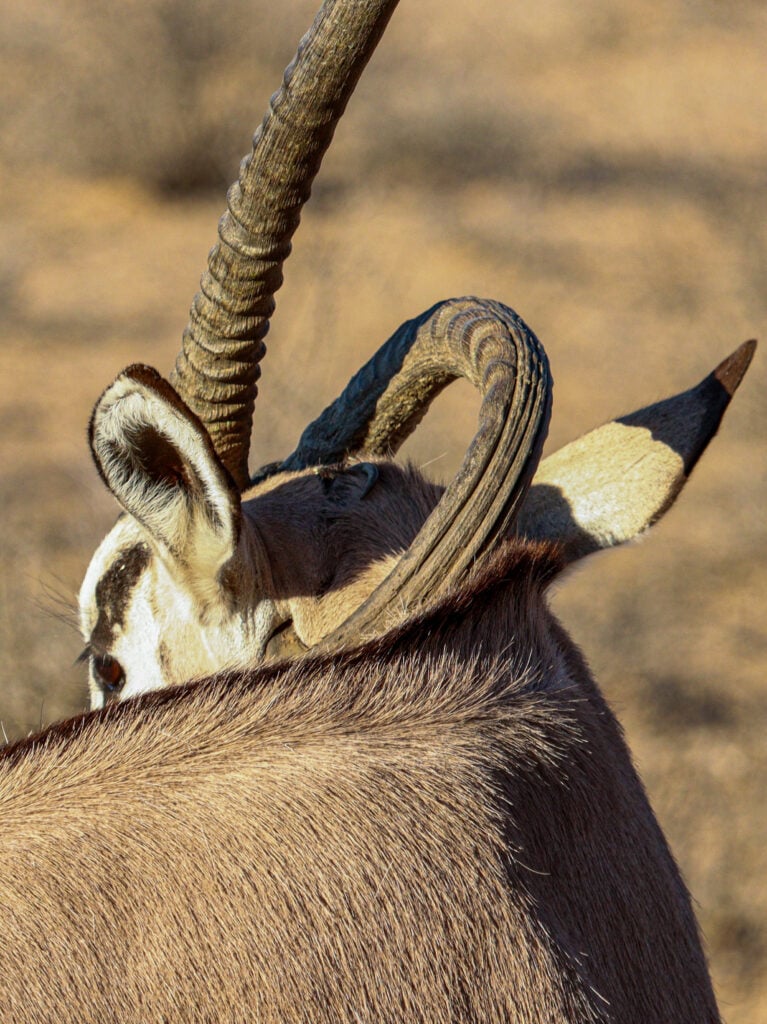
From there, it appears to have grown between the skin and the base of the animal’s skull, before exiting again on the right-hand side of the neck.
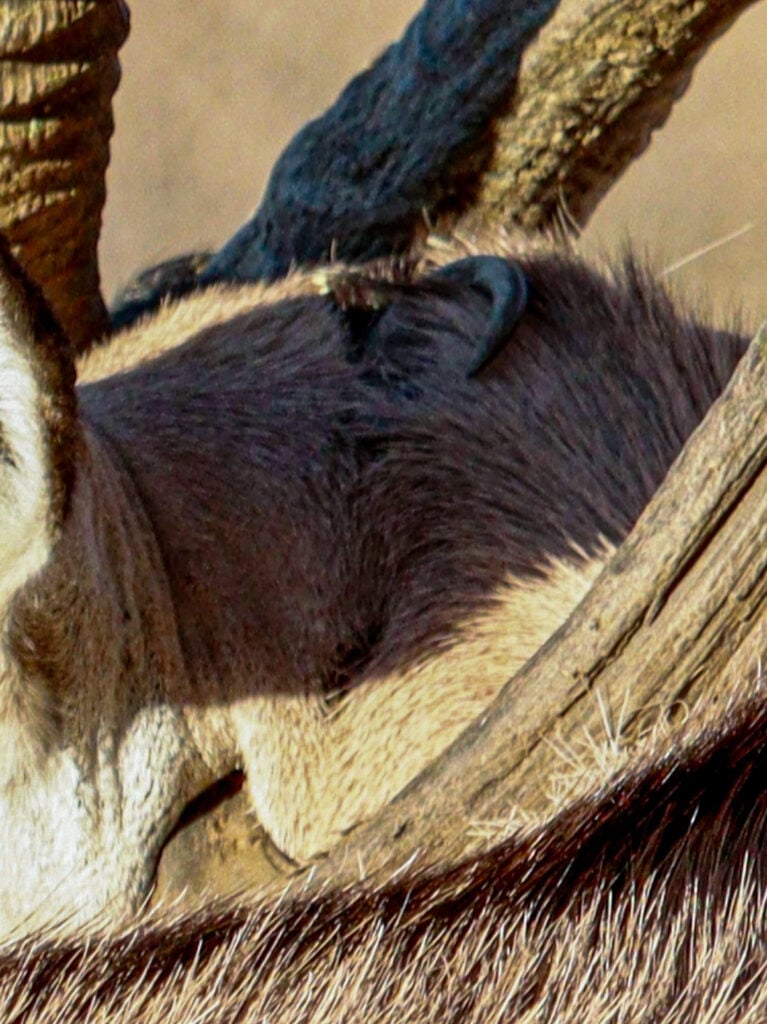
One can only imagine how uncomfortable it must have been for the poor gemsbok to endure. Gemsbok horns reportedly grow at a relatively fast rate.
Even so, for the suffering animal, it must have been an excruciating few months as the growing horn crept through its flesh.
Acceptable condition

Despite its injury, the gemsbok’s body looks to be in fair condition in these photos. However, other images of what is presumed to be the same animal have emerged on social media.
In these, the gemsbok looks severely emaciated, with speculation that it did not have long to live.
Difficult decision
For Pieter, the sighting was both fascinating and distressing. “We were torn,” Pieter explains. “We wanted to help, but we also knew we couldn’t interfere with nature.
“So, after some deliberation, we made the difficult decision to leave the Gemsbok behind and continue with our drive.”
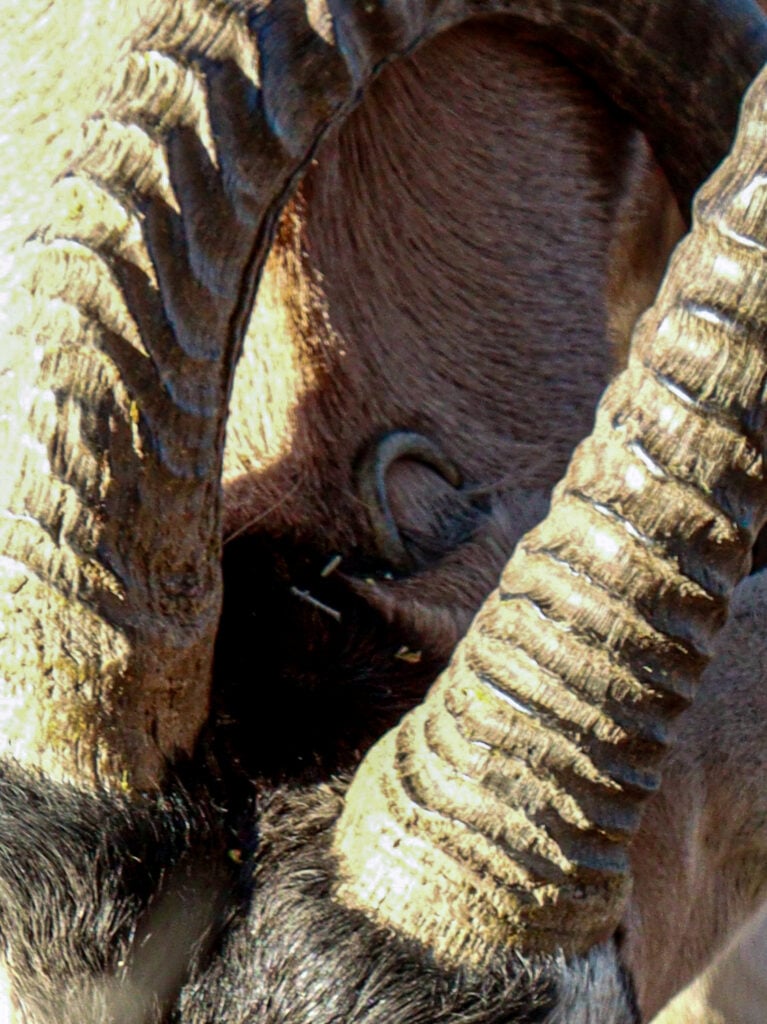
Get our Best Sightings as they Come in
Non-intervention policy
For any visitor to a national park, this is the tough but correct decision. Park management only intervenes when an animal’s well-being has been compromised by human-induced causes.
It is highly probable that park authorities were well aware of the oryx’s deformity and had determined to let Nature take its course. As it happens, horn deformities in gemsbok are not all that unusual, with numerous instances recorded in the past.
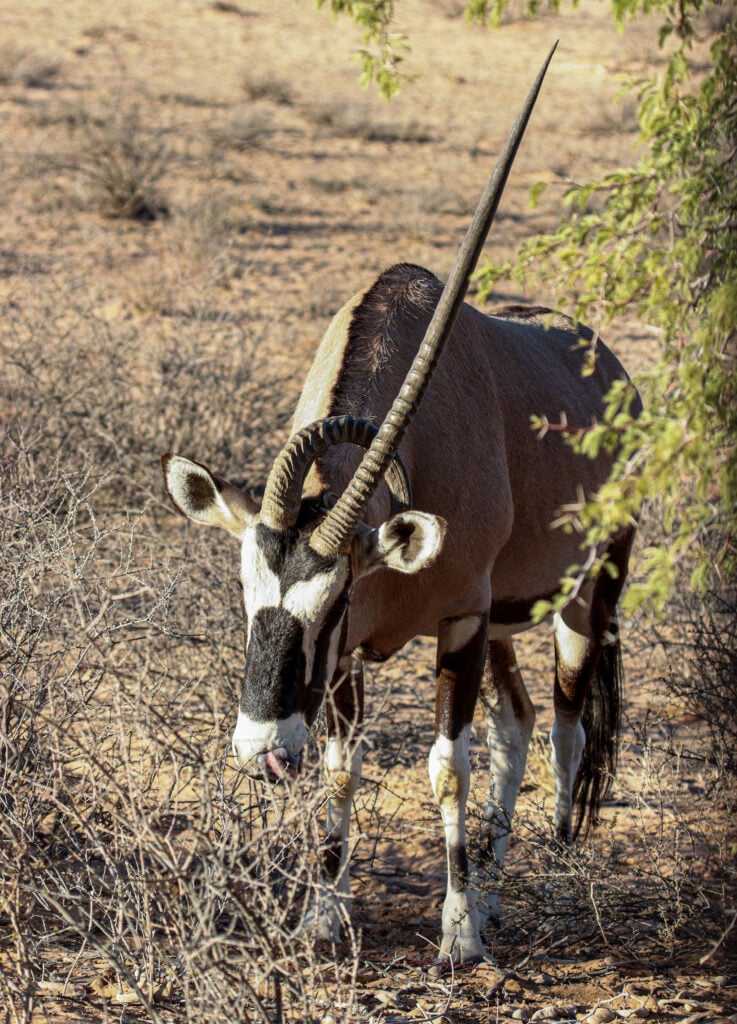
The possible causes for such deformities include damage to the horn as it emerged from the skull, genetic anomalies, and damage during combat.
More about gemsboks
These antelopes are a desert-adapted species, evolved to survive in harsh, arid environments of the Namib and Kalahari deserts.
They live in small herds of between 10 and 40 animals, led by a dominant male. They feed on both leaves and grass, occasionally digging up wild melons and cucumbers, relished for their moisture content.






















































































